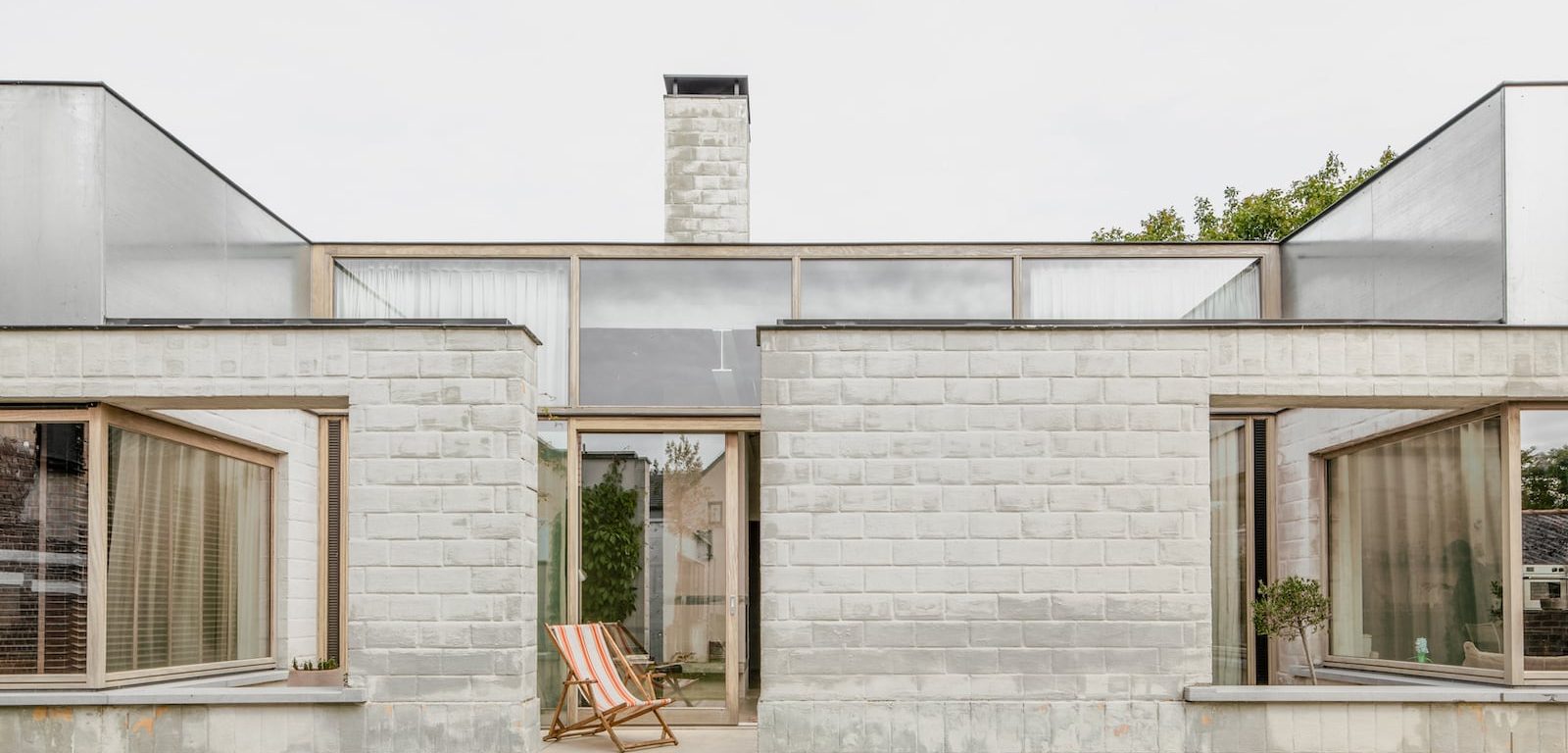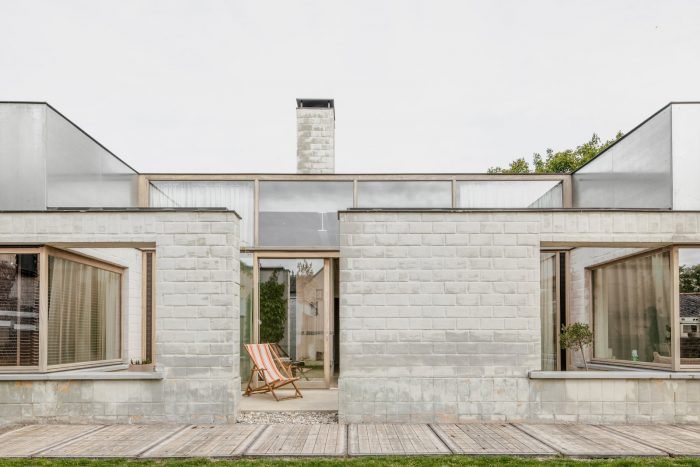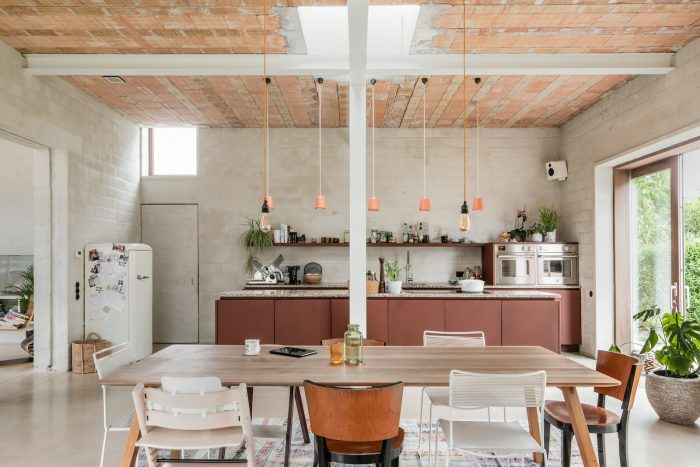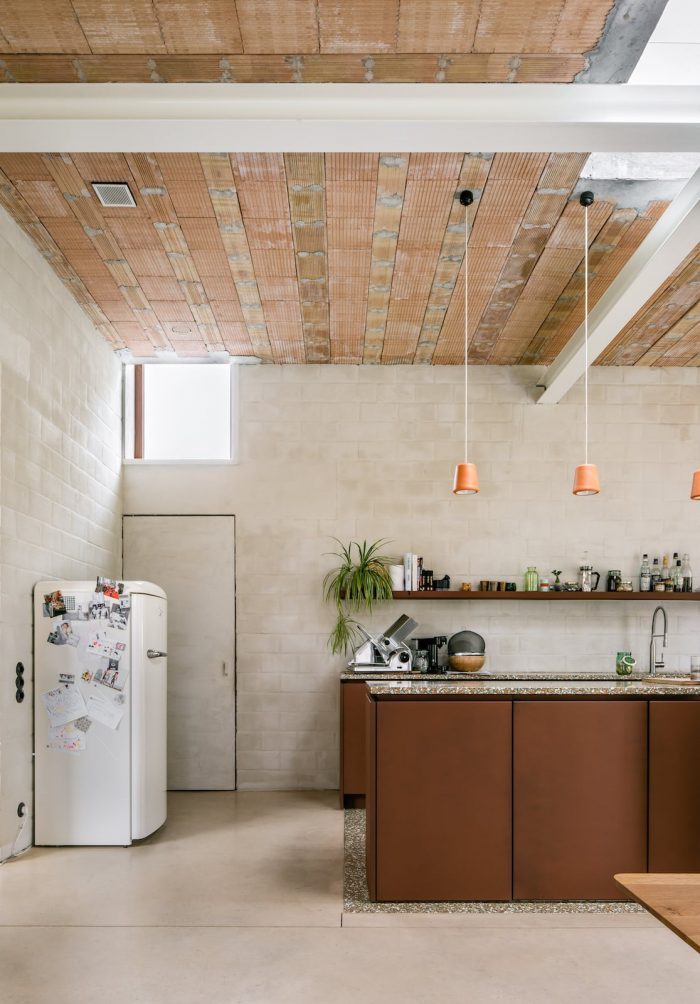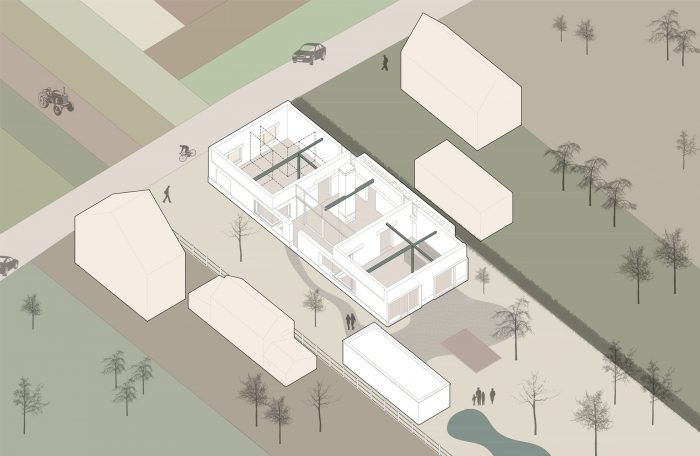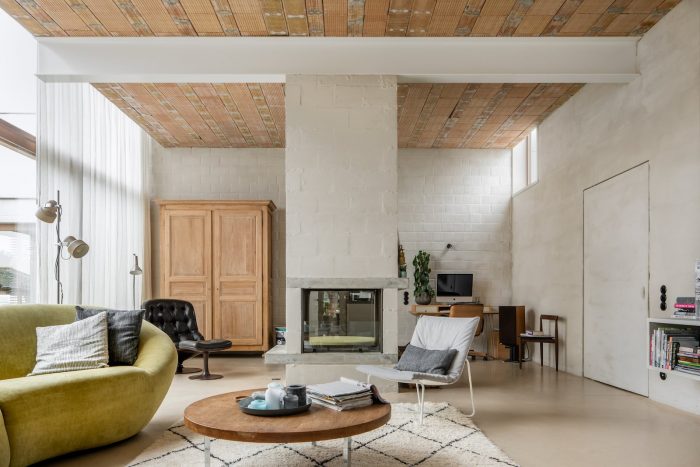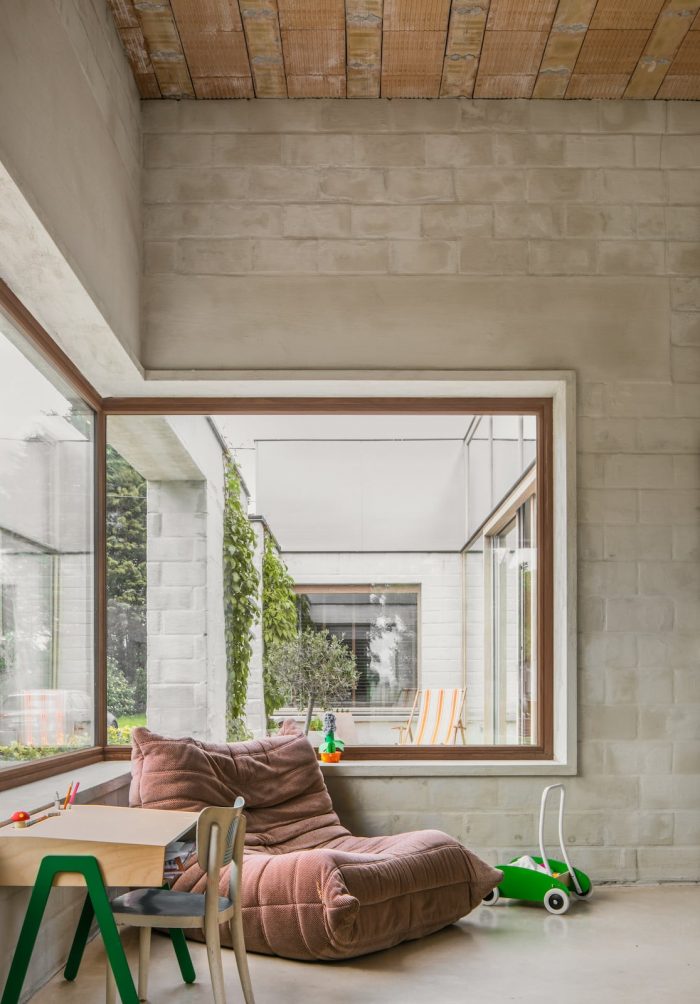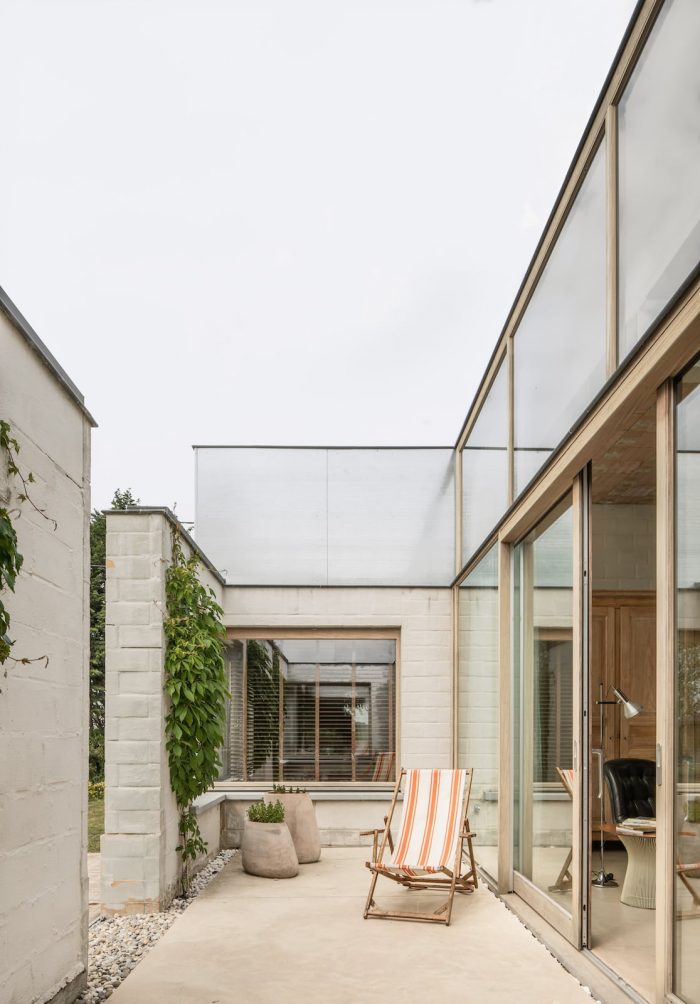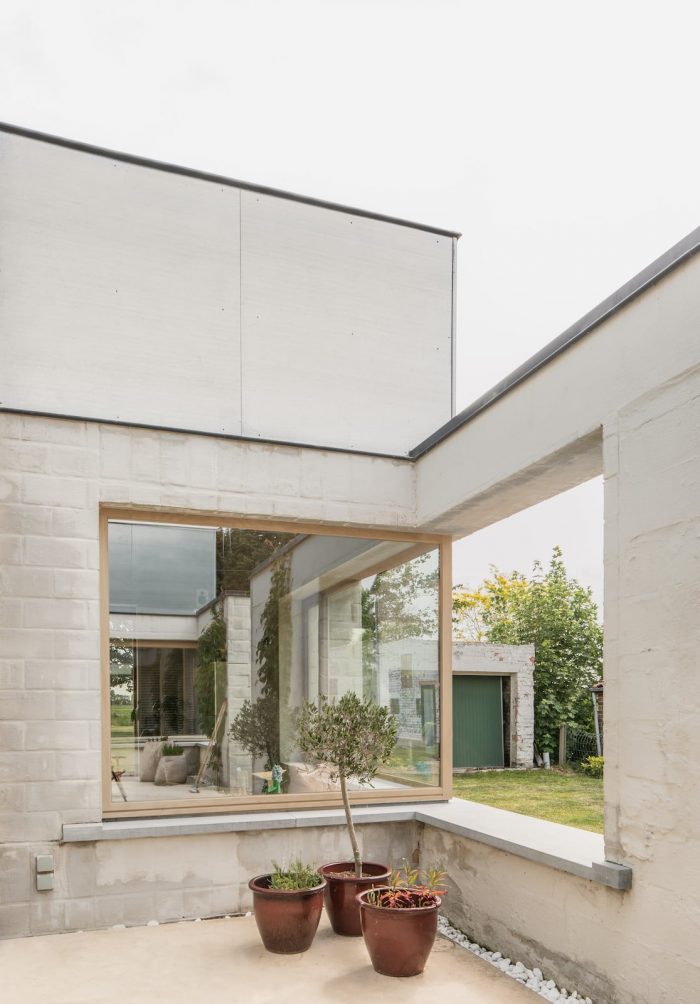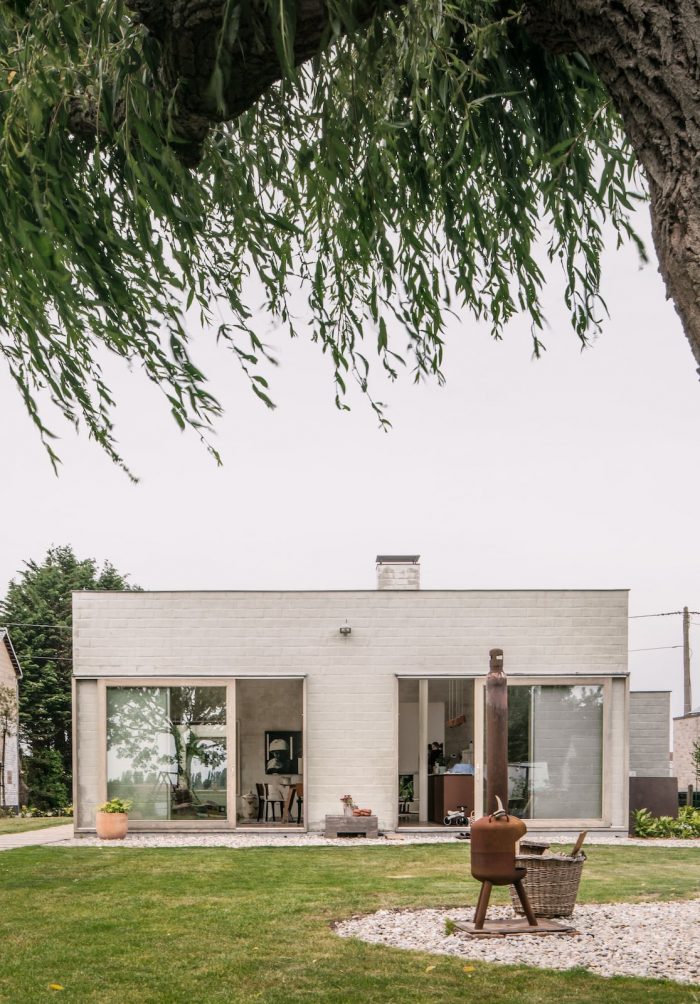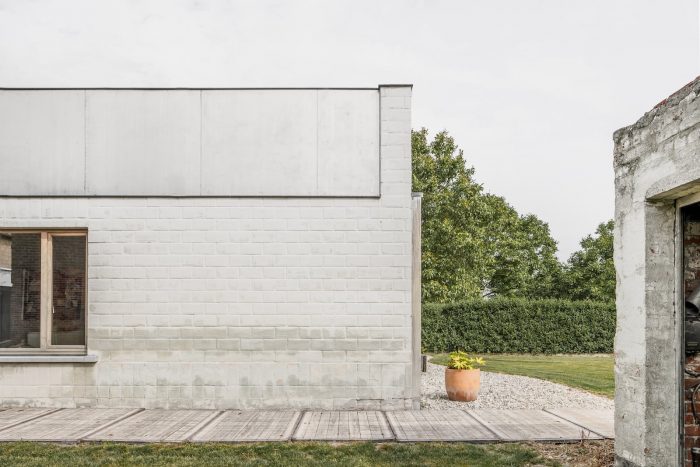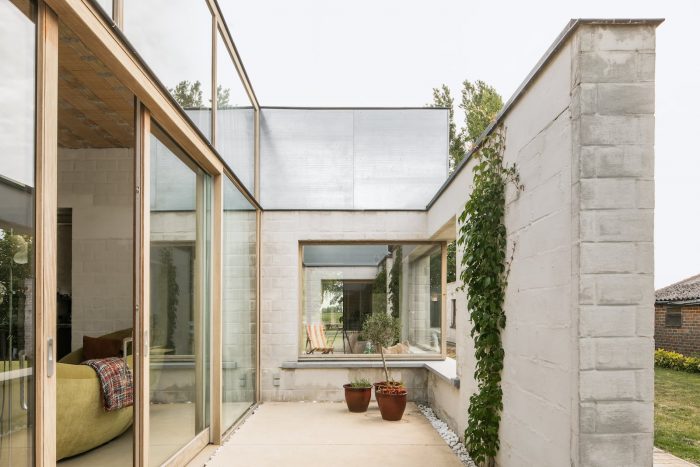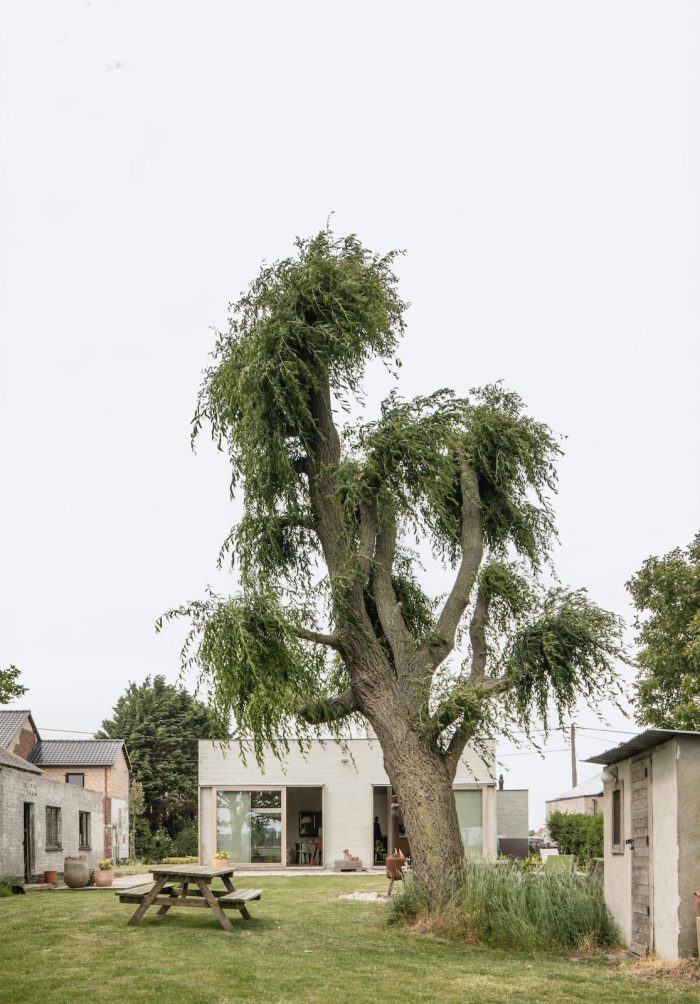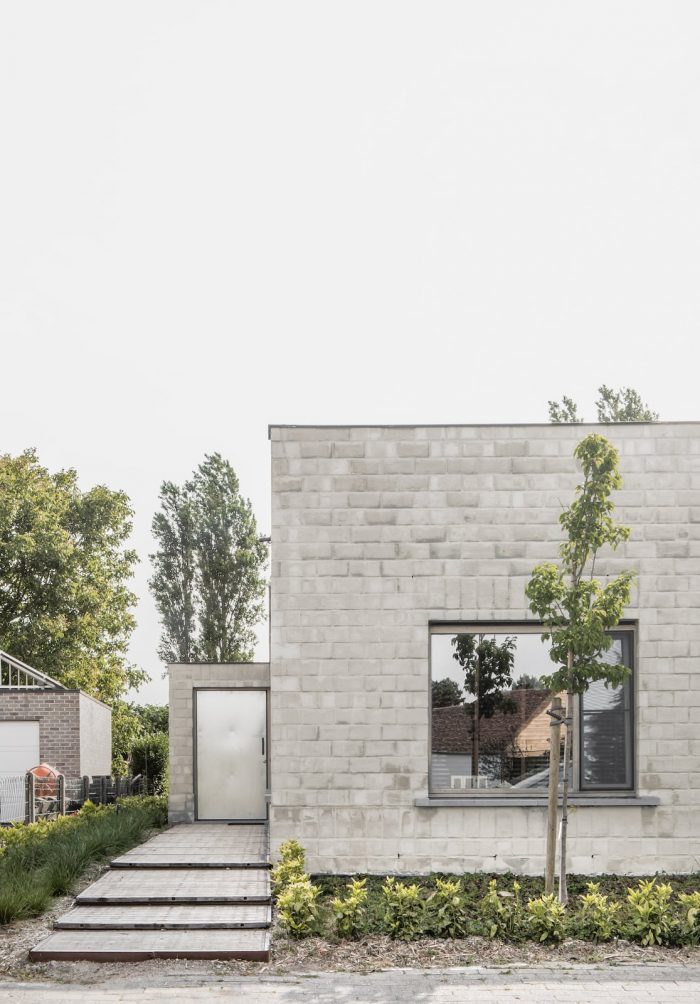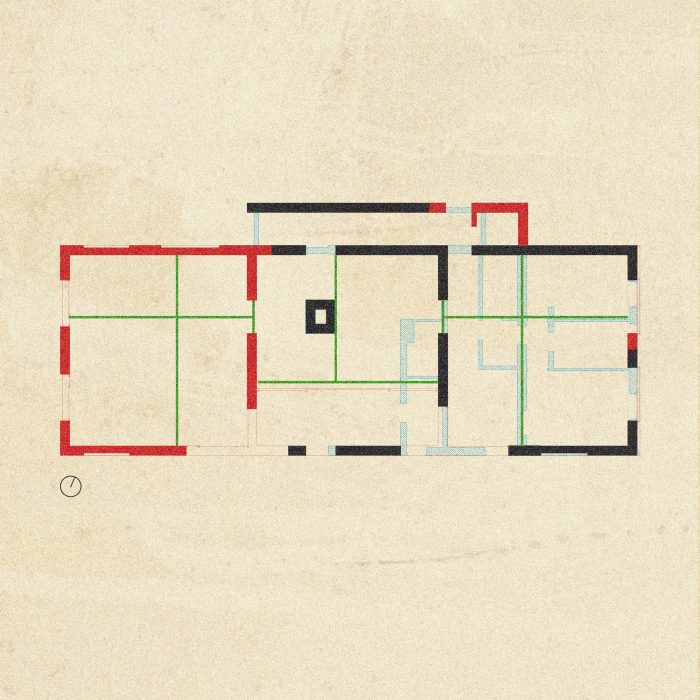C-VL房屋–平房装修的原创。在翻新这个1960年代的平房时,房子里的某些区域没有被定义。这为住户的个人解释留下了很大的空间,所以房子非常自发地活了过来。三个方块。一个最多可以翻倍的生活空间,一个深而窄的地块和一个没有灵感的原始建筑:这些都是这个平房翻新的原始成分。
House C-VL – an original take on a bungalow renovation. In renovating this 1960s-era bungalow, certain areas in the house were kept undefined. This left a lot of room for the personal interpretation of the residents, so that the house came to life very spontaneously. Three squares. A living space that could be doubled at maximum, a deep, narrow lot and an uninspiring original construction: those were the raw ingredients for the renovation of this bungalow.
然而,这所60年代的房子也隐藏着一个有趣的因素。从本质上看,平面图显示了一个半方形的基本形状。对照这个形状,你会得到三个正方形,中间有一个壁炉。突然间,有了一个令人兴奋的元素可以使用。每个房间都有中心点。
Nevertheless, this house from the 1960s also concealed an interesting element. Stripped to the essentials, the floor plan revealed the basic shape of one and a half squares. Mirror this shape and you will get three squares, with a fireplace in the middle. Suddenly there was an exciting element to work with. Centrepiece in every room.
为了给方形空间提供天花板支撑,每个空间都引入了一个结构性元素:在厨房、餐厅和卧室分别所在的后方和前方广场上有一个白色的十字架;在客厅的中央空间,有一个靠在烟囱上的混凝土十字架。通过在每个空间中用一根柱子不对称地放置建设性的十字架,每次都能创造出不同的布局,以十字架为中心,空间围绕它展开。原始天井。没有像在新建筑中经常发生的那样,将入口、储藏室和厕所整合到三个光滑的广场的概念中,而是在原来的附属建筑中给这些空间一个位置。
To provide ceiling support for the square spaces, a structural element was introduced into each one: a white cross in the rear and front squares where the kitchen, dining room and bedrooms are respectively located; and in the central space of the living room, a concrete crosspiece that rests on the chimney. By placing the constructive crosses asymmetrically with a single column in each space, a different layout was created each time, with the cross as the centrepiece around which the space unfolds. Original patio. Instead of integrating the entrance, storage room and toilet into the concept of the three sleek squares, as often happens in a new building, these spaces were given a place in the original annex.
出于对典型的弗拉芒建筑背景的热爱和尊重,其扩建和加建的建筑。在房子的南面,通过一个大的玻璃墙在客厅里创造了开放性。邻居们的接近并不是一种阻碍。恰恰相反,这一事实更加刺激了我们去达成一个创造性的解决方案。
Out of love and respect for the typical Flemish building context with its extensions and additions. On the south side of the house, openness was created in the living room by means of a large glass wall. The proximity of the neighbours was not a deterrent. On the contrary, this fact stimulated us even more to arrive at a creative solution.
窗户的位置有些凹陷,由此产生的天井由一堵墙划定,其轮廓与原来的外屋相同,窗户的开口也与原来相同。这种设计打开了前厅,同时为邻近的生活空间创造了一个缓冲区。此外,这种干预不仅在起居室和边上的长条形花园之间创造了迷人的互动,而且在餐厅和卧室之间也创造了迷人的互动,从而产生了非常宽敞的感觉。
The windows were positioned somewhat recessed and the resulting patio was delineated by a wall on the contours of the original outbuilding and with the same window openings as in the original. This design opens up the antechamber and at the same time creates a buffer for the adjacent living space. Moreover, this intervention not only created a fascinating interaction between the living room and the strip of garden at the side, but also between the dining room and the bedroom, resulting in a very spacious feeling.
自发的生活。在室内,高高的天花板被选择,故意保持粗糙。结构墙被涂上了Kalei灰泥。在客厅里,支撑梁靠在烟囱上,但除此之外,它只是悬空而不靠在任何东西上。这是一个细节,对这个房间的宽敞感觉有很大贡献。壁炉本身并不是简单的,而是包含了俏皮的混凝土元素,这里和那里都有一个框架或装饰,孩子们自发地坐在那里看书。
Spontaneous living. In the interior, high ceilings were chosen that were deliberately left rough. The structural walls were painted with Kalei stucco. In the living room, the support beam rests on the chimney, but otherwise it simply cantilevers without resting on anything. It is a detail that contributes greatly to the spacious feeling of this room. The hearth itself is not just straightforward, but contains playful concrete elements that here and there have a frame or decoration and where the children spontaneously sit down with a book.
这只是一个例子,说明居民被赋予了自己设计生活空间的自由。即使是每个房间里的十字架的位置所产生的角落也不一定被赋予特定的功能,所以任何事情都是可能的。
This is just one example of how the residents have been given the freedom to design their living space themselves. Even the corners created by the positioning of the crosses in each room are not necessarily assigned a specific function, so that anything is possible.
Architects: GRAUX & BAEYENS architecten
Year : 2017
Photographs :Jeroen Verrecht
City:DE HAAN
Country:Belgium

